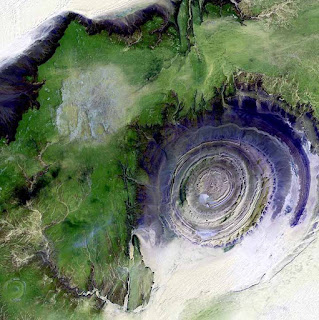I am pleased to announce that my book "Yuga Shift: The End of the Kali Yuga & The Impending Planetary Transformation" has been released on December 15, 2023.
The last Ice Age, which began nearly 125,000 years ago, had reached its maximum extent during the Last Glacial Maximum (LGM) around 20,000 years ago. At this time, large parts of the Northern Hemisphere were covered in kilometers thick ice caps, and the sea level was nearly 400 feet lower than it is today.[1] Large tracts of the continental shelves which are now submerged under water, used to be sea-front, real estate – perhaps supporting many thriving, maritime, Ice Age civilizations. Not only were the existing islands much larger back then, but many new islands were exposed in the seas, which were connected to each other and to the mainland by land bridges, forming vast antediluvian landmasses.
Note: This article was first published on Mysterious Universe (MU).
There was a widespread belief in the ancient times that human civilization has declined from an erstwhile Golden Age of uncommon peace and prosperity, when all men were virtuous. The ancient accounts reveal that the enlightened consciousness of the higher Ages allowed our ancestors to interact with inter-dimensional beings that they called their “gods”.
My discussion with Cliff Dunning on the Earth Ancients Podcast, on the topic of the Mahabharata War in ancient India, and the references to vimanas and powerful astras (i.e. celestial weapons) in the Mahabharata and other Sanskrit texts.
I get introduced at 16:58 mins into the podcast, and our discussion continues for more than an hour after that. We touched upon of lot of interesting questions, including the possibility of extraterrestrial interventions in human civilization in the remote past.
Note: This article was first published on Mysterious Universe (MU)
A new theory doing the rounds on the internet in recent times is that, the geological feature in the Sahara desert known as the “Eye of the Sahara” is the legendary kingdom of Atlantis.
My initial reaction was one of skepticism, since Plato had described Atlantis as a large island, as big as Libya and Asia Minor combined, located beyond the Straits of Gibraltar. However, I decided to take a closer look at what the proponents of this idea are claiming to check if that conforms to the descriptions of Atlantis found in the Critias [1] and the Timaeus [2].
Note: This article was originally published on Mysterious Universe (MU)
The Gospels contain surprisingly scanty information about the early life of Jesus. Only four out of the eighty nine chapters in the Gospels – two each in Matthew and Luke – describe Jesus’s life prior to his ministry. As per Matthew, the family fled to Egypt when Jesus was an infant, and returned to Nazareth after the death of Herod in 4 BCE.[1]






